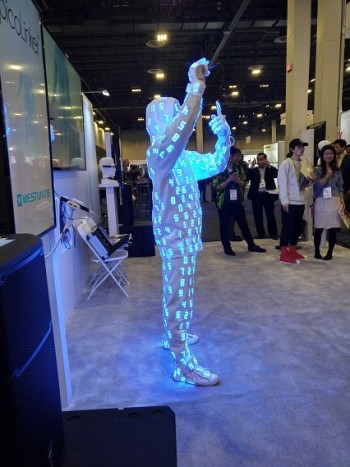This is about the time of year that I ordinarily publish a CES preview in anticipation of heading out to Las Vegas for the annual Consumer Electronics Show (CES). The preview is usually less about technology I am about to see and more about whatever governing perspective I hope to take into the show. Of course, this year’s CES, like nearly every other convention, is virtual. The best I might do to replicate the sensory overload of Vegas will be to string pulsating LEDs over my desk, pound some bass lines through a subwoofer and jam my pockets with protein bars and Vitamin Water (my usual sustenance at CES).
But the meeting is more than the brilliant and weird and innovative and mind-bending technology that is on display. It is also an extensive menu of conference sessions addressing everything from privacy to health care to home entertainment to education and more. And I would expect that this year’s sessions on expanding broadband connectivity will be weighted with greater significance given the rocketing demand for broadband in the face of increased learning and working and healing from home (NTCA’s CEO Shirley Bloomfield will be featured at a panel discussion exploring broadband connectivity.)
So what questions am I taking into CES this year? In the past, I’ve thought about things like “using technology meaningfully,” which often manifests in things like sensors and wearables for elder care and aging in place. This year, I am curious to see how much of the “You Will” has suddenly become “You Are” (if you click the “You Will” link — it will take you to a stunning series of ATT commercials from the early 1990s that predicted many of the things we take for granted today). We have talked about this pivoting paradigm previously in these pages, the notion that all those things we said we would do someday, we’re doing now. So, my question coming into CES this year is, will increased demand for both broadband connectivity and apps (both “broader across the population” and in terms of increased quantity) inspire new approaches or developments? What is the best way to bring these developments to wider audiences, including the elderly or even those who are connected to some extent but perhaps not as extensively as they could be? Even as we expect to not be in pandemic mode forever, where do we expect to settle in the so-called “new normal”? How will increased interaction with telehealth inform future use trends?
For now, I am mapping out my conference schedule as the sessions are posted. As for the virtual expo floor, I have started to review some preview literature and videos offered by vendors. One example is a myoelectric device that translates neuron activity for faster gaming response. The operating principle is a sensor that rests on the user’s hand to detect slight changes and transmits orders to execute an electronic response before the physical action is completed. Stated differently, your alter ego on the screen pulls the trigger while your brain is yet communicating that order to your finger. I won’t engage a debate as to whether gaming is meaningful, but the development of more sensitive and responsive technology could be expected to translate to advances in myoelectric prosthetics.
So, stay tuned for reports from the virtual CES. It might lack the sound, color and excitement of Vegas, but the promise this year promises to be as great as any other.


